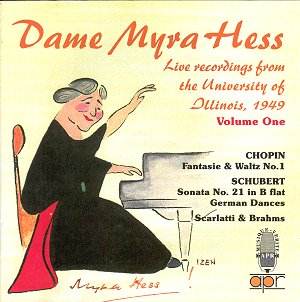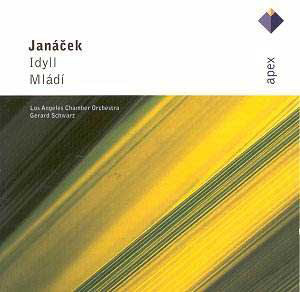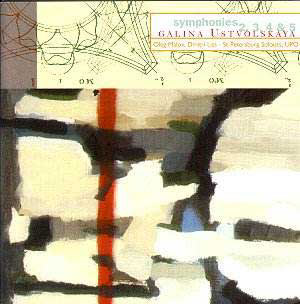 Composer: Myra Hess
Composer: Myra Hess
Works: Frederic Chopin: Fantasie in F minor op. 49, Waltz No. 1 in E flat op. 18; Franz Schubert: Sonata No. 21 in B flat D960, German Dances – selection; Johannes Brahms: Intermezzo in C Op.119/3; Domenico Scarlatti: Sonata in G, L387
Performers: Myra Hess, piano
Recording: Live recordings from the University of Illinois, 17 and 18 March 1949
Label: APR 5520
Myra Hess, a pianist whose artistry transcends the mere confines of her era, is often remembered for her remarkable interpretations of the Romantic repertoire, particularly those of Chopin and Brahms. This first volume of her live recordings from the University of Illinois in 1949 offers a rare glimpse into her interpretative breadth and emotional intensity at a pivotal moment in her career. The selected works not only highlight her technical prowess but also reveal her vibrant musical personality, which is often overshadowed by the more polished, yet sometimes restrained, character of her studio recordings.
The disc opens with Chopin’s Fantasie in F minor, a work that demands not only technical skill but also profound emotional depth. Hess’s interpretation is a whirlwind of fiery passion, characterized by a boldness that one might not anticipate from her recorded legacy. Her approach is both expansive and intimate, with a pedal technique that lends a rich, resonant quality to the sound. Notably, her dynamic range—marked by thunderous climaxes followed by delicate, whisper-like passages—creates an overwhelming sense of drama that reflects the piece’s narrative qualities. This contrasts sharply with her previous commercial recordings, which often leaned towards a more reserved aesthetic. The op.18 Waltz is similarly electrifying; Hess’s phrasing is imbued with a spirited agility, capturing the dance-like essence of the piece while infusing it with an unmistakable depth of feeling.
The Schubert Sonata No. 21, while performed with commendable clarity, reveals limitations in Hess’s interpretative choices. The reading, though technically proficient, lacks the probing insight and revelatory depth that mark the finest interpretations of this monumental work. While her articulation is generally convincing, the performance occasionally flirts with surface-level engagement, missing the profound emotional undercurrents that Schubert’s later music often demands. This might be an artifact of the live setting, where the pressure of performance can sometimes inhibit deeper exploration, yet it remains a notable contrast to her compelling Chopin.
Equally engaging are the German Dances, which Hess introduces with delightful charm and wit. Here, her mastery of tone and timing is remarkably evident, as she navigates the varied rhythms with a playfulness that is utterly infectious. This selection stands out not only for its engaging execution but also for its illustration of Hess’s ability to connect intimately with her audience, transforming the concert hall into a shared space of joy and celebration. The Brahms Intermezzo and Scarlatti Sonata exemplify her strengths as well, each unfolding with the warmth and grace one expects from such a seasoned performer, further demonstrating her interpretative consistency across varied repertoire.
Sound quality in this live recording is commendably managed by APR, despite the historical limitations of the source material. There are moments of flutter and occasional drop-outs, yet these do not significantly detract from the listening experience, given the context of the recordings. The production is enhanced by thoughtful packaging—complete with an affectionate biography and evocative photographs of Hess—which enriches the listener’s understanding of her artistry.
This release stands as an essential documentation of Myra Hess’s live performance capabilities, showcasing a pianist who is as fiery and expressive as she is technically adept. The juxtaposition of her robust Chopin with a more restrained Schubert offers listeners a multifaceted portrait of an artist at work, while the overall production honors her legacy with sensitivity and care. A splendid start to a major series, this volume is unreservedly recommended for both devoted followers of Hess and newcomers eager to explore the depths of her remarkable interpretations.



